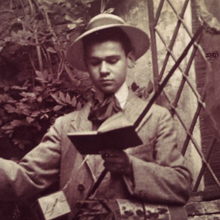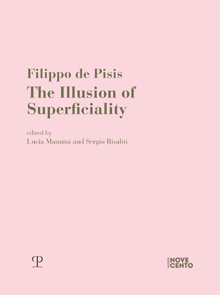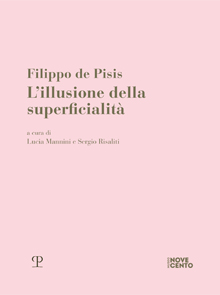Ricerca Veloce
Ricerca Avanzata

Filippo De Pisis
Born in Ferrara in 1896 from a family of noble origins, Luigi Filippo Tibertelli, who would later take back part of the family’s surname which had fallen into disuse, began his artistic training at home under the guidance of tutors. At just ten years old, he sets up his first “bedroom” in the attic, where he retires to write. Taken from studies of entomology and botany, it collects curious objects such as herbs, shells, butterflies, stuffed animals, photos and paintings. De Pisis feels above all a writer. He writes short stories and essays, lectures and is in correspondence with intellectuals of the caliber of Giovanni Pascoli. He also reads avant-garde magazines and frequents futurist circles. Exempted from military service, he has lived between Bologna and Ferrara since 1915, where he studies literature and philosophy. Fundamental in his training is the attendance of the brothers Giorgio de Chirico and Alberto Savinio, who arrived in Ferrara in 1915 for military service: together with Carlo Carrà they form the core of the metaphysical school. Through them he comes into contact with the French avant-garde, Ardengo Soffici and Tristan Tzara. After the war he moved to Rome, a city that marked the beginning of his vocation to painting, where he frequented the group of the second Futurism and began to elaborate his characteristic still lifes. In 1920 the Bragaglia art house dedicated his first personal exhibition to him. In 1925 he moved to Paris, where his painting meets the favor of the market and where he meets artists such as Georges Braque, Henri Matisse and Pablo Picasso. He began to paint Parisian views, copies of antiquities, still lifes and nude studies, participating in the group “Les Italiens de Paris” and in the exhibitions of the Italian twentieth century. The Thirties are marked by both personal exhibitions and by the presence in reviews such as the Quadrennial of 1931 and the Venice Biennials of 1930 and 1932.After the outbreak of the war he settled first in Milan and then in Venice in 1943, where he devoted himself to painting views. In the 1940s, exhibitions followed one another, including an exhibition in New York and a personal room at the 1948 Venice Biennale. The last decade of his life was marked by precarious health conditions due to a severe form of arteriosclerosis, which in 1949 forces him to hospitalization. In the summer of 1951 his first major retrospective was set up at the Estense Castle in Ferrara. He will die in Milan on April 2, 1956 and two months after the Biennale will dedicate a vast retrospective to him.
Vedi anche...
Filippo de Pisis
- € 14,25
- € 15,00
Filippo de Pisis
- € 14,25
- € 15,00

